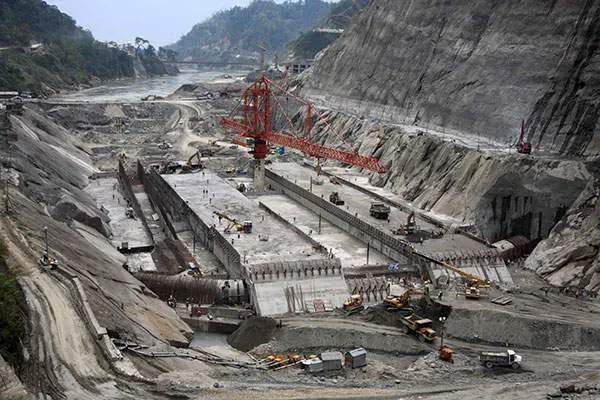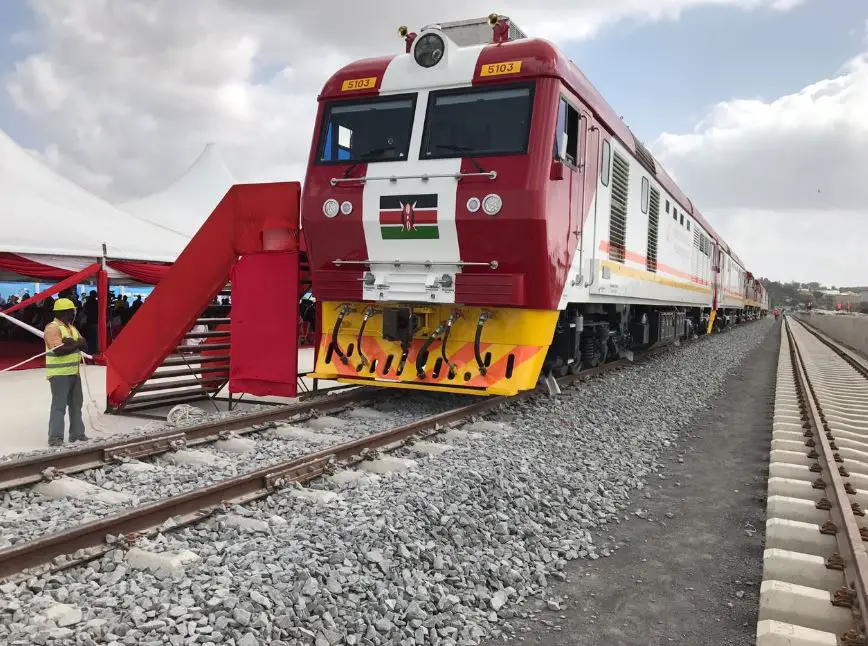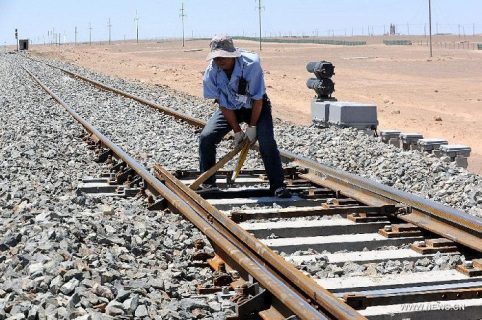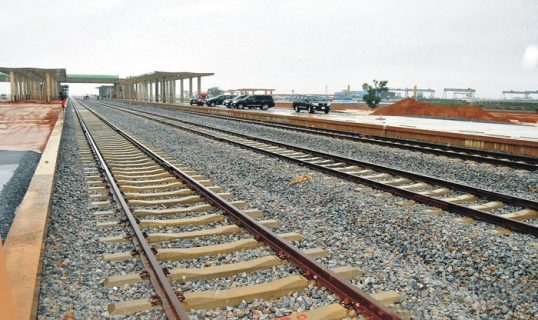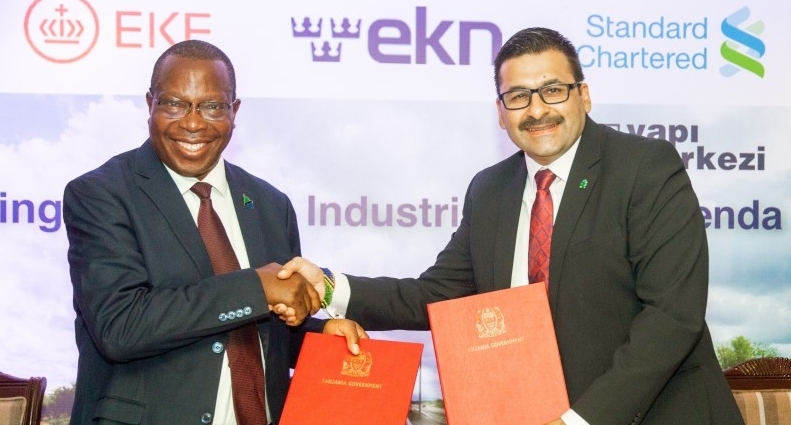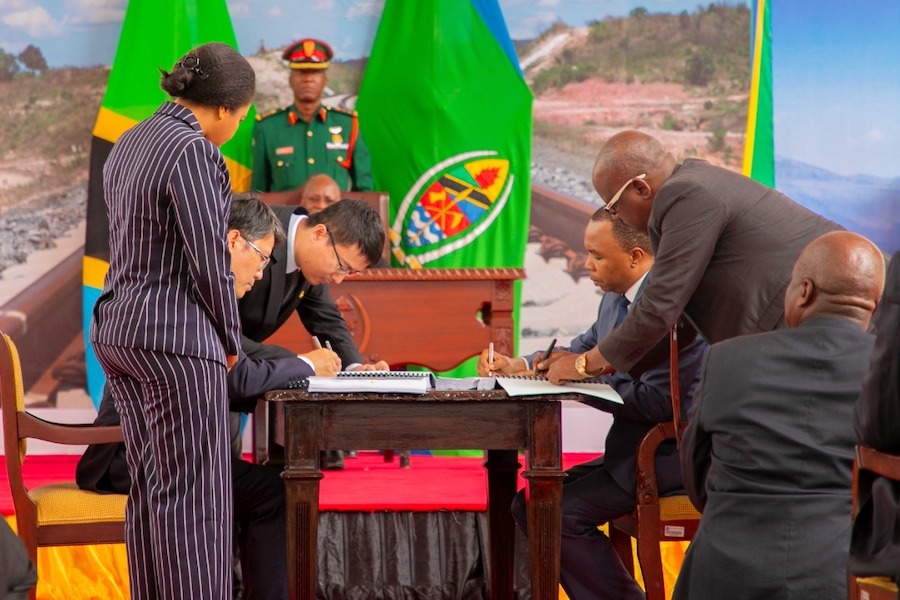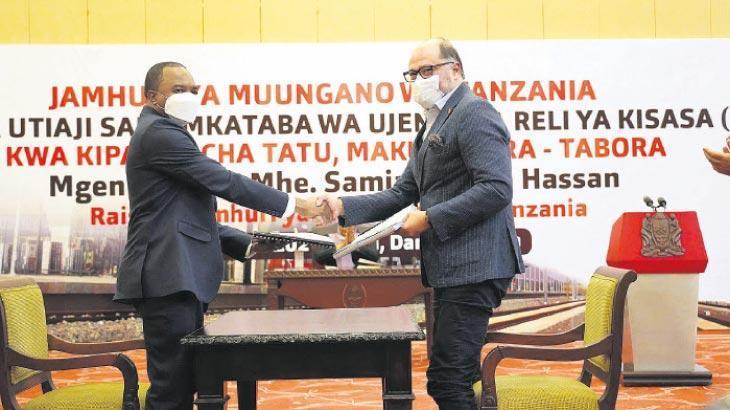The Grand Inga hydroelectric power project is a massive US$ 80 billion expansion to the existing 351-MW Inga 1 and 1,424-MW Inga II plants in the Democratic Republic of Congo that were commissioned in 1972 and 1982 respectively.
Also Read: Lesotho Highlands Water Project (LHWP) timeline and all you need to know
The Grand Inga hydroelectric power project, which mainly involves the construction of a series of six additional dams, is set for development across the Congo River-the world’s second-largest in terms of flow (42,000m3/s) after the Amazon, and the second-longest river in Africa (4,700km) after the Nile River-approximately 150 kilometres upstream of where the river empties into the Atlantic Ocean.
It is estimated that the vertical drop, the volume, and velocity of water flow at this site, can support a series of hydroelectric power stations, each with a generation capacity ranging from 4 to 8 GW.
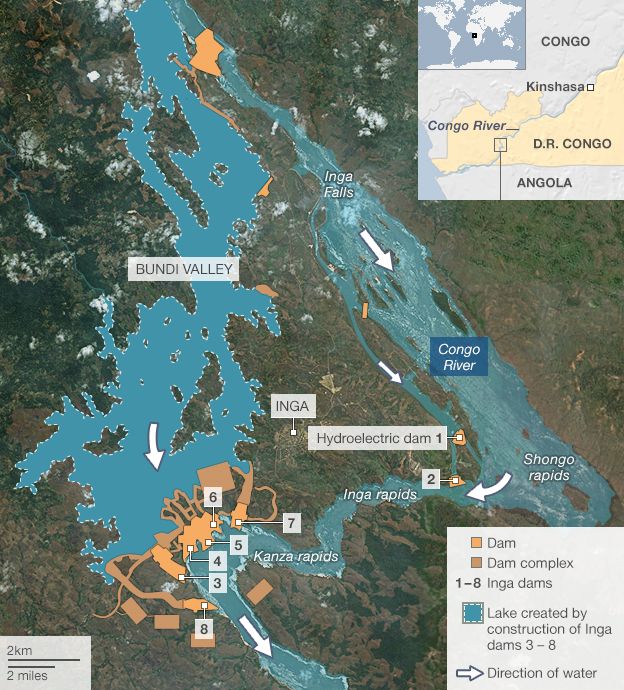
Implementation of the Grand Inga hydroelectric power project
The project will be implemented in 6 development phase’s starting with the construction of Inga III. The latter will be constructed in two sub-phases, initially a low head and then a high head, extending the dam wall and making it higher.
There will be no closure of the Congo River nor the construction of tunnels, just an open channel. Approximately 6000m3 m/s will be diverted for Inga III to a valley that runs parallel to the Congo River bed. When completed, Inga III will have the capacity to produce 4,800MW of electricity.
The construction of the successive phases of Grand Inga will hinge on the availability of a market and funding for the project, the design of which allows independent development of the power stations in the series, as well as the phased development of each station.
Upon completion, the entire project is expected to produce up to 42,000 MW of electricity, over twice the power generation capacity of the Three Gorges in China, which at present is the biggest hydropower project in the world and more than a third of the total electricity currently produced in the whole of Africa.
Project Timeline
2009
The World Bank pledged its support i.e. technical support in the form of a US$ 50 million grant to cover EIA studies and all technical studies that needed to be carried out, as well as training of officers, setting up of Inga III Dam Authority, and development of a communication plan for the Grand Inga hydroelectric power project.
2010
The African Development Bank (AfDB) provided US$ 15 million dollars to conduct a feasibility study of Inga-III and the Grand Inga hydroelectric power project.
2011
South Africa and the DRC signed a Memorandum of Understanding (MOU) in November for the development of the Grand Inga project.
2013
In May the two governments signed a cooperation Treaty to jointly develop the Inga III Dam. The DRC re-launched the process for the selection of a developer and established the first stage objective of the Inga dam project which was to lay the foundation stone in October 2015.

In June, the AfDB together with the DRC government signed 2 grant agreements for a total of US$ 5.250 million. These grants fell within the framework of the Fragile State Facility (FSF) and were intended to provide technical assistance for the development of the project.
In early July, the terms of reference for the Inga III social and environmental impact assessment (SEIA) studies were posted for public comments.
Sep 2014
South Africa to buy power from DRC’s Inga Dam
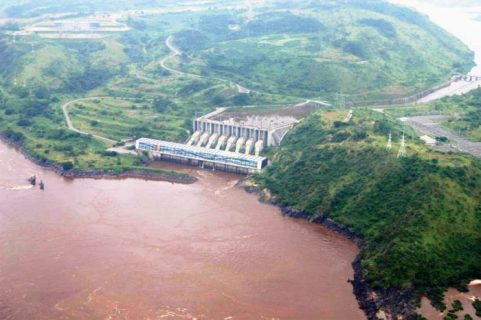
South Africa will be benefiting from power generated from a dam in the Democratic Republic of Congo (DRC), after the two sealed a purchase order for SA to buy electricity in six years’ time starting end of this month September.
In the agreement, it is expected that South Africa will play the role of a “reliable purchaser” in order to support the Grand Inga (Inga 3 dam) development in the western DRC.
South Africa is experiencing an electricity shortage, and the government needs 2500MW to be supplied during the six phases of the whole Inga dam project.
According to the South African energy minister, Tina Joemat-Pettersson last week, the country, in pursuing the deal, has put in place strategies to get enough power supply. He added that they could not wait to “wake up in 2020 and realize they need power.”
Congolese energy minister, Bruno Kalala, said that the deal is a milestone in the development of the Inga 3 dam project and the country was looking forward to getting a “reliable purchaser” of the power from the project.
Once the Grand Inga dam power project is completed, it will be able to produce up to 40,000 MW of electricity, over twice the power generated from the Three Gorges Dam in China, and more than a third of the total electricity currently produced in Africa.
Once completed, the dam will be the largest in DRC.
Dec 2015
Construction of Inga 3 hydroelectric project in DRC gets new impetus
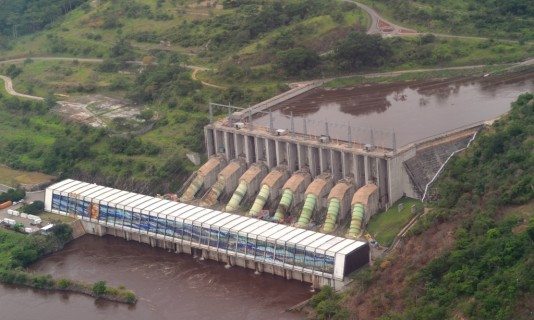
The government now hopes to launch the construction of the long-delayed Inga 3 hydroelectric project in DRC and hopes work can start by early 2017, the country’s prime minister has announced.
Augustin Matata Ponyo told the media in London on the sidelines of an African investment conference in London that the construction OF 3 hydroelectric projects in DRC is in very advanced stages and that the government was in the selection process to decide who will be the main players in this project.
Congo’s government has said it would choose a developer for Grand Inga from three groups of companies: China Three Gorges Corp. and Sinohydro Corp.; Posco and Daewoo Corp. of South Korea in partnership with Canada’s SNC-Lavalin Group Inc.; and Actividades de Construccion y Servicios SA, based in Madrid, and Spain’s Eurofinsa SA.
2016
The World Bank cancelled its support for the Grand Inga hydroelectric power project.
Jul 2017
Congo to delay Inga 3 hydroelectric project
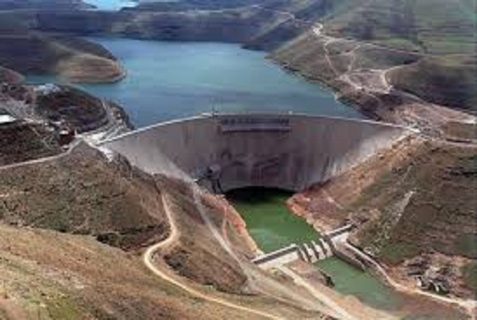
The Democratic Republic of Congo has recently made a statement that the Inga 3 hydroelectric project is not yet expected to start producing power as originally planned in 2020 or 2021 but until 2024 or 2025.
The 4 800 MW project worth $14BN has had quite a struggle to attract financing. Last year it was treated to a big blow when the World Bank announced it had suspended funding after the presidency took control of the project, raising transparency concerns.
Early June this year, Congo asked one consortium, the final bidders – led by China Three Gorges Corporation and another that includes Spain’s Actividades de Construccion y Servicios SA – to submit a joint bid.
Bruno Kapandji, the head of the government agency overseeing the development of the Inga 3 project, told Reuters that they are working on the timing between 2024 and 2025 now that they have identified the potential developer.
Also read: Construction of Inga 3 hydroelectric project in DRC gets new impetus
The project along the Congo River is expected to expand on two existing Inga hydroelectric dams which are part of an eight-stage Grand Inga project that would produce a record 44 000 MW at an estimated cost of about $50BN to $80BN.
Its proponents say it could power half of Africa in the future. However, critics argue that the money would rather be spent supporting smaller local plants.
The project’s future seems clouded by the insubstantial political situation in Congo; President Joseph Kabila refused to step down at the end of his constitutional mandate in December 2016.
This has contributed greatly to the growing insecurity in this unstable Central African country, as well as an increase in militia violence and an overflow of prison breaks.
Of the 4 800 MW, 2 500 MW are set aside for South Africa, the other 1 300 MW will support Congo’s mining sector and the remaining 1 000 MW will be directed towards meeting the domestic power demand. On average only 15% of Congo’s population has electricity.
June 2018
Construction of US $13.9bn Inga3 hydropower to commence this year

The Democratic Republic of Congo plans to start construction work this year on the frequently delayed Inga 3 hydropower project at a predicted cost of US $13.9bn, after receiving a joint bid from two previously competing consortia of investors. This is according to Bruno Kapandji, director of the Agency for the Development and Promotion of the Grand Inga Project.
Project delays
DR Congo, Africa’s biggest copper producer and the world’s largest source of cobalt has been considering building Inga 3 for more than a decade to address a power shortage that has curbed mining-industry growth.
A treaty signed in 2013 allowed the plant to export 2,500MW of power to South Africa. The plant would form part of a larger Grand Inga hydropower complex spanning part of the Congo River and produce as much as 50,000MW when complete, according to the World Bank.
China Three Gorges Corp and Actividades de Construccion y Servicios SA of Spain submitted a joint bid on June 6 for the project that will produce 11,000 MW.
“Our aim is to start Inga3 hydropower this year. The two consortia have given us a document in which they committed to creating a single consortium. We are in the process of preparing, discussing and negotiating the exclusive collaboration contract which will allow the single candidate to go to the market to find the financing.” Kapandji said.
Also Read: Voith opens a new center for hydro power projects in Ethiopia
Construction process
The two consortia will work together and submit a joint offer to build and manage the hydropower and once a concessionaire company has been established, the developers will commit themselves to mobilise the funds to pave way for construction.
The initial phase plan of the project was supposed to produce 4,800MW. However, its capacity status changed after an increase in demand. According to Mr Kapandji, The mining industry’s energy deficit has increased from about 500 megawatts to 1,300MW in the intervening years since the project was conceived. Construction of the power plant is estimated to take seven years.
October 2018
An agreement was signed between the Government and a consortium of Chinese and Spanish companies to undertake technical studies and environmental and socio-economic impact assessments of Inga 3.
This came following the decision by the Government of DRC to change the Inga 3 concept from 4,800MW to 11,000MW for a total investment cost of US$ 18bn – including US$ 4bn for the transmission lines.
2019
The Government of the DRC in collaboration with the Agence de Développement et de Promotion du Projet Inga (ADPI) organized promotion events for the Grand Inga project.
July 2019
US $80bn Grand Inga Dam power project discussed at AU Summit

The Grand Inga Dam hydroelectric project in the Democratic Republic of Congo is showing signs of coming back to life. This is after the project was discussed at the African Union Extraordinary summit which was held in Niger.
Amani Abou-Zeid, AU’s Commissioner for Infrastructure and Energy, did not go into details about the Grand Inga Dam project when asked about it but she said that Africa needs to develop its energy resources.
“It is very important that we develop all the energy resources into useful projects. Grand Inga is a priority because Africa needs a lot of megawatts as it proceeds to its industrial phase,” she affirmed.
She also added that consultations will be made for financial partners in order to realize this dream.
Nov 2019
Angola to buy 5000MW from Congo’s Grand Inga hydropower plant

Angola is set to buy 5000MW from neighbouring Democratic Republic of Congo’s proposed $14bn Grand Inga hydropower plant project.
Angolan Energy Ministry made an announcement and said the country will require electricity generated by the dam from 2025 and will purchase it on the condition the fee doesn’t exceed US $30/MWh.
Angolan and Congolese officials are already working on plans to export 100MW of power from the existing Inga I and II facilities to Angola’s Cabinda province.
Construction of US $14bn Grand Inga dam in Congo on track
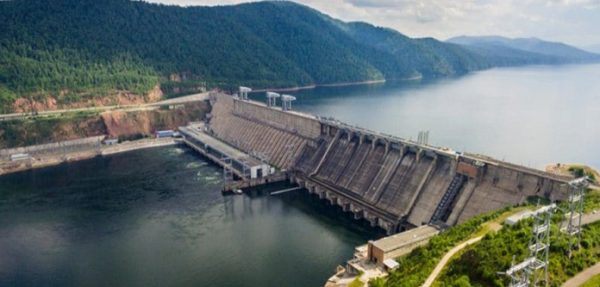
Construction works on the US $14bn Grand Inga Dam hydroelectric project in the Democratic Republic of Congo is on track. This is according to Patrick Kabuya, head of communications for the government agency known as ADPI, who said the project would proceed.
Also Read:Ghana to commence construction of Pwalugu multipurpose dam
2020
In June, the Government of DRC resolved to present the project to the regional heads of State and explore the market on the continent for the power generated.

South Africa indicated a willingness to buy 2.5 GW of the dam’s output while Nigeria showed interest in buying 3 GW and the Congolese mines in Katanga Province 1.3 GW.
Aug 2020
Consortium formed towards the implementation of Inga III hydropower project in Congo
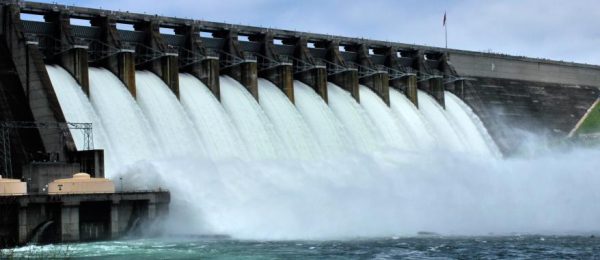
A consortium has been formed for the implementation of the proposed 11,050 MW Inga III hydropower project on the Congo River in the Democratic Republic of Congo (DRC). The consortium is made up of six Chinese companies led by the China Three Gorges Corp, and AEE Power Holdings from Madrid, Spain.
The above-mentioned companies together with Actividades de Construcción y Servicios (ACS) from Spain, which withdrew from the project due to alleged disagreements over the distribution of shares, were selected by ADPI-RDC, the Agency for the Development and Promotion of the Grand Inga site, in the Central African Country.
Following the new agreement, the 6 Chinese companies in the consortium have a total 75% stake in the project while the Spanish company AEE Power Holdings has a 25% share. The latter will retain this shareholding in the future special purpose vehicle that will be set up to develop and ensure the financial mobilization for the realization of this project.
Also Read: Congo to construct high voltage distribution substation in Kasumbalesa
Expectations for the project
The US$ 14bn project includes the construction of two dams and approximately 2 000 km and 3 000 km long transmission lines within the DRC and across borders respectively. Upon completion, the Inga III hydropower project is expected to electrify Kinshasa, lead to the development of the DRC’s mining sector, and earning of foreign currency from exported power. A deal was struck with South Africa in 2013 to supply about 2.5GW of electricity through the SAPP power lines, and Nigeria and Angola in the western region of Africa are also expected to benefit from the project.
It is also expected to contribute to the realization of the NEPAD objectives of increased power interconnections across Africa as well as help stabilize the political conditions in the African countries involved through cross-border cooperation in the continent and beyond.
June 2021
DRC appoints Fortescue to develop the Grand Inga hydroelectric power project

The Government of the Democratic Republic of Congo has announced the appointment of Fortescue Metals Group for the development of the Grand Inga hydroelectric power project.
This announcement came barely a week after the Australian company revealed that it was in talks with DRC to develop a series of dams that could lead to the formation of the world’s largest hydroelectric project.
According to reports, the company will invest US$ 80bn in this project, which includes the construction of six more dams that would bring the project’s total capacity to over 40,000 MW, roughly double the size of the largest hydroelectric dam project in the world i.e. Three Gorges dam in China.
To date, Inga hydroelectric power project is made up of two dams with a combined installed capacity of nearly 1,800 MW and whose construction was completed in 1972 and 1982.
Also Read: Three concession agreements inked for Essor A2E solar project in DRC
In addition to the construction of the dams, Fortescue plans to construct a port and production units for hydrogen and green ammonia in its quest to become a green energy giant in Africa.
Aug 2021
Inga II Hydropower Complex in DRC: Existing financing agreement for upgrading turbine 5 extended

Ivanhoe Mines Energy DRC has extended its existing financing agreement under a public-private partnership with the Democratic Republic of Congo (DRC)’s state-owned power company, La Société Nationale d’ Électricité (SNEL), to facilitate the upgrade of turbine 5, one of eight turbines at the Inga II Hydroelectric Complex on the Congo River.
Ivanhoe is a sister company of Kamoa Copper SA, tasked with delivering reliable, clean, renewable hydropower to the Kamoa-Kakula Copper Mine in the Kolwezi District of Lualaba, in the DRC. The extension of this financing agreement builds on the framework agreed in the memorandum of understanding that was signed between Ivanhoe and SNEL, and announced in April this year (2021).
Also Read: DRC appoints Fortescue to develop Grand Inga hydroelectric power project
Under this financial arrangement, rehabilitation and upgrade activities will be financed by Kamoa Holding in form of a loan to SNEL, which will be repaid through a deduction to monthly power bills incurred over the life of the loan.
Overview of the project
Kamoa Copper and SNEL, together with Stucky SA of Lausanne, Switzerland, and Voith Hydro of Heidenheim, Germany, which are the EPCM and the contractor of the project respectively, have commenced a technical assessment to define the scope of work and associated costs.
In addition to the upgrade of Terminal 5 at the Inga II Hydropower complex, the terminal equipment on the Inga-Kolwezi transmission line will also be upgraded to increase its transfer capacity by a minimum of 200 MW.
The estimated output of 162 megawatts (MW) is expected to be unlocked following the upgrade of Inga II’s turbine 5. A part of the production will be used to meet the future power requirements of the Kamoa-Kakula Mine, and the surplus will be distributed on the national power grid to increase access to electricity for the citizens of the central African country.


